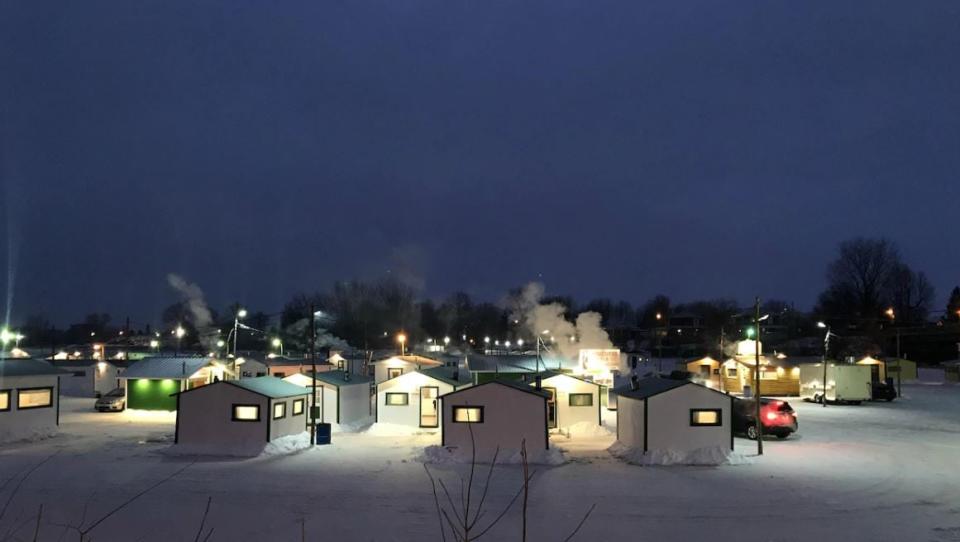Ice fishing village is all wet as thaw delays beloved winter tradition in Ste-Anne-de-la-Pérade, Que.

By this time of year, Sainte-Anne-de-la-Pérade, Que., is usually teeming with thousands of visitors eager to angle for tomcod — a fish, also known as tommycod, that swims upstream from the St. Lawrence River estuary every winter.
But this year's ice fishing season is lacking a key element: Ice.
"This 86th edition will be very short," said Steve Massicotte, president of the Sainte-Anne river outfitters association.
"We hope to open around mid-January."
The excitement traditionally kicks off on Boxing Day on the Sainte-Anne River, where more than 450 deluxe ice-fishing shanties — the size of small cottages — are set up on the ice.
At night, smoke can be seen billowing from chimneys while lit windows glimmer and street lights shine. People can drive right up to their shack.
"It's a small village in a village. It's 24-hour fishing," said Massicotte.

At the height of the fishing season, some 450 fishing chalets will be installed on the Sainte-Anne River. (Hadi Hassin/Radio-Canada)
Spectators and fishermen alike gather with hopes of hooking tomcods as roughly one million swim upstream from the St. Lawrence River estuary in time for the ice fishing season.
The village is in Quebec's Mauricie region, about 200 kilometres northeast of Montreal.
This year, the village was set up by Dec. 18, but temperatures warmed up and the ice melted.
Massicotte said the start of the season can attract as many as 15,000 visitors, and at least $1 million in revenue. There's also millions in economic spin-offs throughout the region. The activity is the town's main tourist attraction during winter months.

The Sainte-Anne River is flowing when it is usually frozen by Boxing Day. (Rowan Kennedy/CBC)
The unpredictable weather is making it tough on any business that relies on wintry conditions, something Quebec is known for.
"It's really the unknowns and the variability that's, for me, the biggest problem for destinations and tourism businesses," said Isabelle Falardeau, a professor of tourism at the Université du Québec à Trois-Rivières.
It's not just a Quebec problem. Winter-related businesses across Canada have been grappling with unusually warm temperatures and rain all month.
"There just isn't any cold air right now anywhere over the continent and that's very unusual, even for an El Niño year," said John Gyakum, a McGill University atmospheric and oceanic sciences professor.
El Niño is associated with the warming of the Pacific Ocean, which warms the atmosphere above it, and can lead to unusual weather patterns.

The deluxe ice fishing shanties have been pulled ashore after the ice melted. (Rowan Kennedy/CBC)
Massicotte said temperatures need to stay at least -10 C for 10 days, with the mercury dropping to at least -12 C at night.
"If we have -15 or -20, it's going to be our gift of January," he said.
Massicotte finds it harder to predict the start of winter these days, and he said he worries about years to come.
This isn't the first time the ice fishing season was delayed. For example, slush, ice and rain postponed the start of the season by about a week in 2014.
This year, if the river freezes again in mid-January, there will only be a month left to fish for tomcod.


